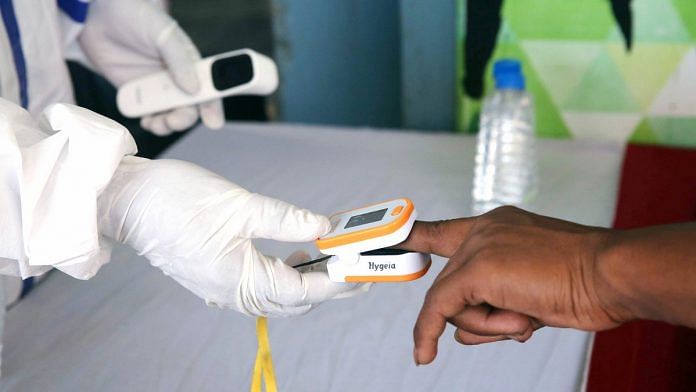A few months ago, most people had never heard of the R number. Now, thanks to the novel coronavirus, we all know – or think we know – what it means.
R is the reproduction number of an infectious disease – basically how many people one infected person will transmit the disease to. For highly contagious diseases, such as measles, this can be almost 18. For Covid-19, it is estimated to be just over three.
R0 – or R nought – is the starting value of R at the beginning of an outbreak when the entire population is susceptible to the disease. As the outbreak progresses, R becomes Re – the effective reproduction number – which changes over time as people become infected and interventions are used to combat the spread of the disease.
R is widely used as a key metric for determining UK public policy. The rationale is that R gives a quick assessment of our control of an outbreak. If R is greater than one, the outbreak is growing. If it is less than one, the outbreak is under control and will eventually die out. Hence, the government’s focus is on keeping R below one as lockdown is slowly eased.
However, a group of scientists who call themselves Independent SAGE (a parallel group to the government’s own SAGE – Scientific Advisory Group for Emergencies) is now drawing the value of this metric into question. In a recently published report, the group argues that R can be misleading and the government shouldn’t rely so heavily on this one metric for determining policy.
Independent SAGE comprises 12 scientists from various fields and was created in response to concerns over the lack of transparency coming from the official SAGE committee. It is populated by a group of eminent scientists, headed by the former UK government chief scientific adviser David King. However, is the group correct? And is R a suitable metric for determining public policy?
Environment and human behaviour
First, R is not based solely on the virus but is affected by the environment and by the behaviour of the population. For example, the value of R on the Diamond Princess cruise ship was estimated to be 11 even though the worldwide average is 3.28. The close confines and movement of the ship’s staff facilitated COVID-19 transmission. The virus was the same, but the environment and behaviour were different, altering R of the virus.
R also varies depending on the model used to calculate it. Using different sets of data (such as from a different country, something that is often done) or using different formulas will give different values of R for the same virus. For COVID-19, we have seen values of R that range from 1.4 to 11, depending on the environment, data and model used.
Also read: World is talking in R0 values and infection rates, but coronavirus doesn’t care for such data
Second, even though we talk about R for the whole UK, this number is not the same for every region or nation of the country. Certain rural areas may have very low transmission rates whereas densely populated urban areas and regions with many care homes and hospitals may have significantly greater rates of transmission. Thus, the value of R used in public policy may not accurately reflect viral transmission in any local environment and so may give a false perspective on the level of precautions necessary.
Third, R is not a real-time value but lags behind the current transmission rates by about a week. This limits the ability to rapidly assess the impact of our interventions on viral transmission. For example, if we begin to ease lockdown restrictions it would be important to know immediately if this is causing viral transmission to increase. However, we won’t see these effects for a week, after which many new people could have been infected.
One tool among many
Finally, by focusing on R we are ignoring many other important parameters of viral transmission, such as how long a person can spread the virus for, or how rapidly the number of cases is increasing. R is just one factor used to understand how an infectious disease is spreading.
To fully understand viral transmission, we need to examine many different factors in as close to real-time as possible. Additionally, R reveals nothing about how many people will be hospitalised or die, both of which are essential data for designing public health policy during an outbreak.
So, with these concerns about the reliability and usefulness of R, should it still be used to guide policy? The answer is undoubtedly yes. However, no policy should be based on, or evaluated by, a single modelled number. Rather, we should use R as one factor in a large toolkit of methods to assess the ongoing outbreak. By using region-specific data and real-time modelling we may be able to also improve the local accuracy of R. The goal is to understand up-to-the-minute disease transmission and assess the effectiveness of our ongoing interventions. R plays a crucial, but not sole role in this evaluation.
This article is republished from The Conversation under a Creative Commons license. Read the original article.
Also read: India’s ‘R’ value falls to 1.22, but active Covid-19 cases could reach 1 lakh by 30 May






